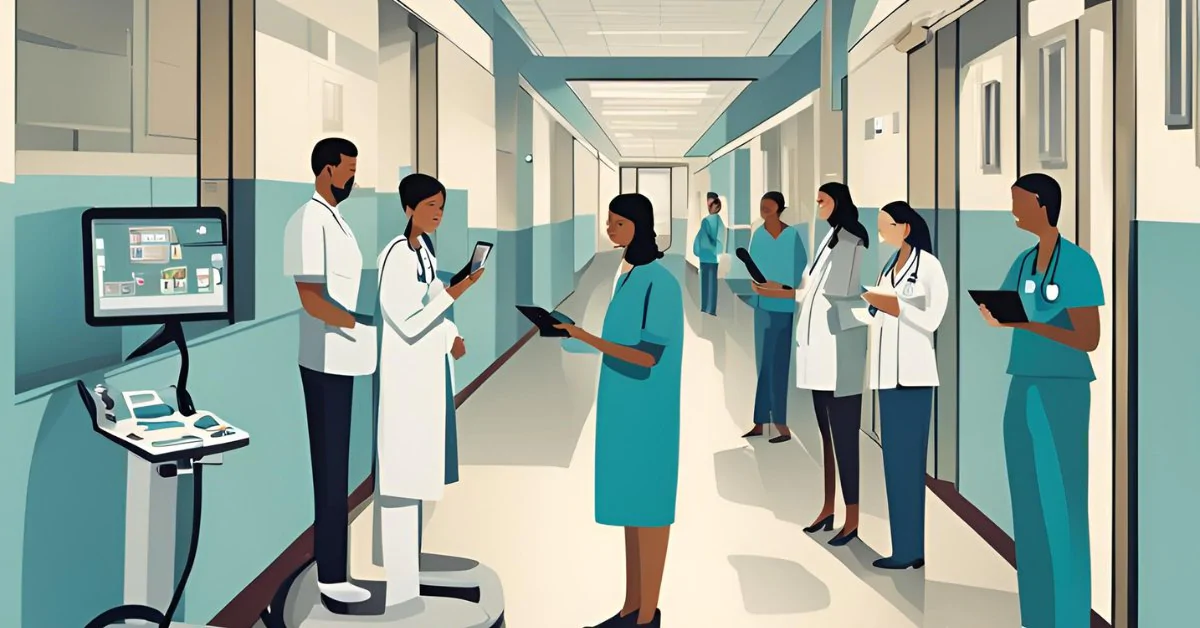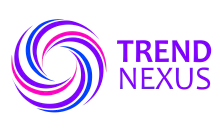The complete guide to Telemedicine: Pros, cons, characteristics, and limitations

English
Español (Spanish)
简体中文 (Chinese (Simplified))
हिन्दी (Hindi)
Português (Portuguese (Brazil))
Français (French)
Deutsch (German)
Summary
Get started
Telemedicine has revolutionized the healthcare industry by providing remote medical services through telecommunications technology.
This approach to healthcare delivery has grown rapidly, especially in the wake of the COVID-19 pandemic, making healthcare more accessible and convenient. We wil explore various aspects of telemedicine, including its benefits, drawbacks, key characteristics, and limitations.
What is Telemedicine?
Telemedicine involves the use of digital communication tools, such as video calls, messaging apps, and online portals, to provide medical care from a distance.
This approach allows patients to consult with healthcare providers without the need for in-person visits, enhancing accessibility to medical services, especially in remote or underserved areas.
Benefits of Telemedicine
Convenience and accessibility
Telemedicine offers unparalleled convenience, allowing patients to receive care from the comfort of their homes. This is particularly beneficial for those living in rural areas or with limited mobility. Telemedicine platforms enable easy scheduling of appointments and reduce the need for travel.
Cost-effectiveness
Telemedicine can be more cost-effective than traditional in-person visits. It reduces travel expenses, time off work, and childcare costs. Some telemedicine services offer lower consultation fees compared to in-person visits, providing financial relief to patients.
Improved access to specialists
Through telemedicine, patients can access specialists who may not be available locally. This is particularly valuable for those requiring specialized care, such as dermatology, psychiatry, or cardiology, ensuring they receive the best possible treatment without geographic limitations.
Enhanced chronic disease management
Telemedicine plays an important role in managing chronic diseases. Regular virtual check-ups, remote monitoring devices, and continuous communication with healthcare providers help in better management of conditions like diabetes, hypertension, and asthma, leading to improved patient outcomes.
Challenges and limitations of Telemedicine
Technological barriers
One of the primary challenges of telemedicine is the reliance on technology. Patients and providers must have access to reliable internet connections, suitable devices, and basic technical literacy.
Technological issues can hinder effective communication and the overall success of telemedicine consultations.
Regulatory and licensing issues
Telemedicine is subject to various regulatory and licensing requirements that differ by country and states.
Healthcare providers must be licensed to practice in the patient’s location, which can complicate cross-border consultations and limit the availability of services.
Privacy and security concerns
The use of digital platforms for healthcare raises concerns about the privacy and security of patient data.
Ensuring that telemedicine services comply with regulations like United States’ HIPAA (Health Insurance Portability and Accountability Act) is essential to protect sensitive information from breaches and unauthorized access.
Limitations in physical examination
While telemedicine excels in many areas, it has limitations in performing physical examinations. Certain conditions require hands-on assessment, diagnostic tests, or procedures that cannot be conducted virtually, necessitating in-person visits for accurate diagnosis and treatment.
Key characteristics of telemedicine platforms
User-friendly interfaces
Effective telemedicine platforms are designed with user-friendly interfaces that make it easy for patients and providers to navigate the system.
Features such as intuitive appointment scheduling, video conferencing, and secure messaging enhance the user experience.
Integration with electronic health records (EHR)
Integration with EHR systems is specially important for telemedicine platforms. This allows seamless access to patient medical histories, treatment plans, and other relevant information, ensuring continuity of care and informed decision-making during virtual consultations.
Remote monitoring capabilities
Advanced telemedicine platforms incorporate remote monitoring capabilities, allowing healthcare providers to track patients’ vital signs and health metrics in real-time.
Devices such as wearable fitness trackers, glucose monitors, and blood pressure cuffs can transmit data directly to the provider.
Secure communication channels
Ensuring secure communication is a fundamental characteristic of telemedicine platforms. Encryption, secure data storage, and compliance with regulatory standards are essential to protect patient information and maintain trust in telemedicine services.

Types of Telemedicine services
Real-time interactive services
Real-time interactive services involve live video consultations between patients and healthcare providers. This synchronous communication method allows for immediate assessment, diagnosis, and treatment, replicating the experience of an in-person visit as closely as possible.
Store-and-forward services
Store-and-forward services involve the transmission of medical information, such as images, videos, and diagnostic reports, to a healthcare provider for review at a later time. This asynchronous method is commonly used in specialties like dermatology and radiology.
Remote patient monitoring
Remote patient monitoring uses digital devices to collect and transmit health data from patients to healthcare providers.
In this approach, the continuous monitoring allows for proactive management of chronic conditions and early detection of potential health issues, enhancing patient care.
Mobile health (mHealth)
Mobile health encompasses a broad range of health services and information delivered through mobile devices and apps.
mHealth initiatives can include everything from fitness tracking and health education to medication reminders and virtual consultations.
Equipment and technology used in Telemedicine
Video conferencing tools
Video conferencing tools are a cornerstone of telemedicine, enabling face-to-face interactions between patients and providers.
Platforms like Zoom, Skype, and specialized telemedicine software provide high-quality video and audio communication.
Diagnostic devices
Various diagnostic devices are used in telemedicine to collect patient health data. These include digital stethoscopes, otoscopes, and blood pressure monitors. These devices can transmit data directly to healthcare providers for analysis.
Remote monitoring systems
Remote monitoring systems track patients’ vital signs and other health metrics. Examples include continuous glucose monitors, wearable ECG monitors, and smart scales. These systems help healthcare providers keep a close watch on patients’ health remotely.
Telemedicine carts
Telemedicine carts are mobile units equipped with video conferencing equipment, diagnostic tools, and other medical devices.
These carts are used in hospitals and clinics to facilitate remote consultations and extend the reach of specialists.

Telemedicine in practice: success stories
Dermatology
Teledermatology has seen significant success, allowing patients to receive expert skin care without visiting a dermatologist’s office.
Online platforms enable patients to send photos of skin conditions for diagnosis and treatment recommendations, improving access to dermatologic care.
Mental health
Telemedicine has transformed mental health care by providing virtual therapy and counseling services. This has reduced barriers to access, particularly for individuals in rural areas or those with mobility issues, and has been instrumental in addressing mental health crises during the pandemic.
Chronic disease management
Programs that integrate telemedicine with remote monitoring have shown success in managing chronic diseases.
For example, patients with diabetes can use glucose monitors that transmit data to their healthcare providers, enabling real-time adjustments to treatment plans and improved disease management.
Post-surgical follow-up
Telemedicine is increasingly used for post-surgical follow-up care. Virtual check-ins allow surgeons to monitor recovery, address concerns, and provide guidance without requiring patients to travel, making the recovery process more convenient and efficient.
The future of Telemedicine
Advances in technology
The future of telemedicine is closely tied to technological advancements. Improvements in AI, machine learning, and wearable devices will enhance remote diagnostics, personalized care, and predictive analytics, further integrating telemedicine into mainstream healthcare.
Expanded access and equity
Efforts to expand telemedicine access and address disparities will be key. Initiatives to provide broadband internet in rural areas, reduce costs, and ensure equitable access to telemedicine services will help bridge the gap in healthcare delivery.
Integration with traditional healthcare
Telemedicine will increasingly integrate with traditional healthcare systems, creating a hybrid model of care.
Combining in-person visits with telemedicine consultations can offer comprehensive, flexible, and patient-centered healthcare, maximizing the benefits of both approaches.
Policy and regulation
Evolving policies and regulations will shape the future of telemedicine. Ensuring consistent licensing standards, addressing reimbursement issues, and maintaining patient privacy and data security will be key to the sustainable growth of telemedicine.
Health will be everywhere
Telemedicine represents a significant shift in healthcare delivery, offering numerous benefits such as increased accessibility, cost savings, and improved chronic disease management.
However, challenges like technological barriers, regulatory issues, and limitations in physical examinations must be addressed.
As technology advances and healthcare systems adapt, telemedicine will continue to play a significant role in modern healthcare, providing innovative solutions to meet the needs of patients worldwide.


